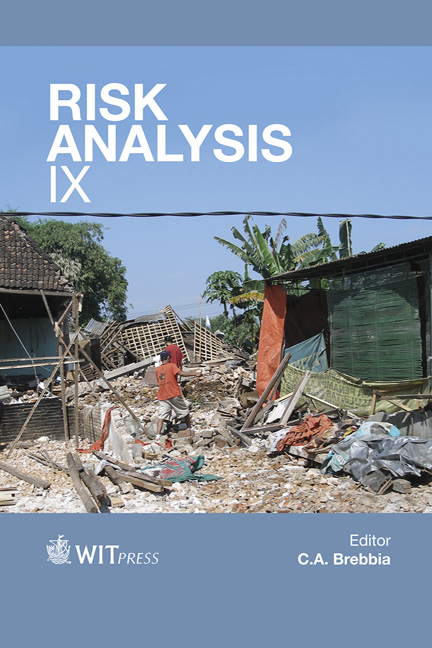Case Study: Flood Impact Reduction
Price
Free (open access)
Volume
47
Pages
9
Page Range
441 - 449
Published
2014
Size
3916 kb
Paper DOI
10.2495/RISK140371
Copyright
WIT Press
Author(s)
Y. Peddemors & B. Willemse
Abstract
Multi-level safety (MLS) is part of the National Waterplan [1], the official government plan for national water policy in the Netherlands. MLS pursues sustainable flood risk management in 2016. The MLS-approach consists of three layers. The first layer concerns prevention: to minimize the occurrence of floods. The second layer aims at flood impact reduction. The third layer deals with a better preparation for the occurrence of a flood. The developed method is an area-specific risk approach that looks at an optimal combination of measures from all three layers. In this paper we concentrate on the second layer, the mandate of the Dutch provinces. Over the centuries floods have invaded the Dutch delta area. Since the year 1200 these floods and subsequent land reclamations have formed the province of Zeeland. Many former sea dikes became inland dikes, so called \“sleeper dikes”. And while they have lost their original function as primary flood protection, they remain as a network of over a thousand miles of elevated tracks that can serve to reduce the impact of a flood. This makes Zeeland a region particularly suitable for MLS. To explore the (im)possibilities of these sleeper dikes we have to broaden our focus. Due to the vast anthropogenic elements in today’s world, it is nearly impossible to neglect any field of activity. Inspired by Carl Steinitz we have applied the method of changing geography by Geodesign to the development of MLS. The objective is to achieve better spatial planning and to improve the decision-making process. Keywords: multi-level safety, flood impact reduction, Geodesign, spatial planning.
Keywords
multi-level safety, flood impact reduction, Geodesign, spatialplanning.





